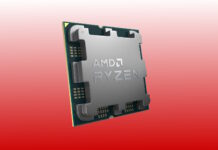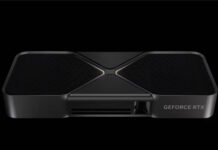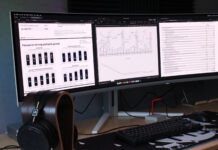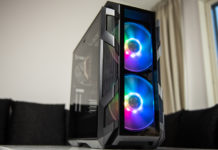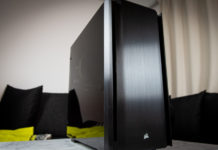Lian-Li has a reputation of building high quality cases. Critically acclaimed and popular among enthusiasts, Lian-Li is revered by many. Today we will look at the one of its latest full tower, A71.
For some people, having the opportunity to review a Lian-Li case is like getting the chance to test drive a Ferrari: rare and thrilling. Lian-Li caters to enthusiast needs and expensive tastes, and the name speaks of quality and exclusivity. Their all-aluminum construction and spacious, sleek designs are very popular among enthusiasts looking for a premium case. Today we’re looking at a new offering in their product line, the PC-A71, which boasts several features that should appeal to the most demanding user, particularly those looking for a full-tower case that can fit high-performance gear.
Lian-Li cases are synonymous with tasteful design, quality construction, and performance options. For those who may not be familiar with their products, they are sold by select retailers, and command premium prices. Quality comes with a price, to be sure. Sleek minimalism is the guiding design aesthetic … you won’t find garish alien-styled cases, and even suggesting their cases should use some plastic might be considered rather blasphemous by many.
The PC-A71 is no exception, and as a full-tower case, it caters to enthusiasts who need space for more drives, bigger graphics cards, perhaps a full water cooling system, and expect it all to fit inside a stylish case.
Let’s now look at the A71 in further detail to see if it lives up to its Lian-Li pedigree.
As a full-tower case, the PC-A71 features numerous internal drive bays and considerable interior space. Below we see the technical specifications of the A71.
|
Lian-Li PC-A71B
|
|
| Case: | Full tower |
| Side panel: | – |
| Measurements (WxHxL): | 220mm x 595mm x 615mm 8.7″ x 23.4″ x 24.2″ |
| Weight: | 7.9kg / 17.4 lbs. |
| Motherboard support : | mATX, ATX, E-ATX |
| Cooling (fans): | Rear –2×120 mm Mid – 2×120 mm Front – 2×120 mm |
| Material: | Aluminum |
| Internal units: | 10×3.5” (3 removable) |
| External units: | 5×5.25” |
| Expansion slots: | 7 |
| Power supply | – |
| Other: | Anti-vibration HDD cages Removable 3-bay HDD cage HDD cages can be rotated 180 degrees 120mm fans x 4 for HDD cage Removable motherboard tray VGA card pillar VGA card pillar extension Door can open from left or right side Anti-vibration side panel springs Removable top panel Pre-modded liquid cooling holes Security Lock Removable PSU tray Panel with USB 2.0, iEEE 1394, Mic & headphone |
| Price: | $260 |
Below are the fan specifications;
|
LI121225BL-4
|
|||
|
RPM
|
Airflow (CFM)
|
Noise (dB(A))
|
Power (W)
|
|
1,500
|
56
|
24.7
|
3.24
|
This is quite an extensive feature set, which we’ll now examine in greater detail.
The PC-A71 is available in both silver (A-71A) and black (A-71B) color options, and today I’ll be reviewing the black version. It is probably easier to match drive bay components with the black version, although Lian-Li does offer many types of bay covers and accessories in both colors through major retailers. This will allow users to match their color scheme throughout.
The first thing noticeable about the A-71 is the size of the box in which it is housed. This box is BIG. I was half-expecting to pull a back muscle when I picked up the box, but I was pleasantly surprised that did not happen, since the A-71 is constructed from thick aluminum and is very lightweight for its size. Included with the package is a full complement of screws, standoffs, rubber grommets, zip ties and bases, keys, and manual. The manual has large, easy-to-understand pictures and instructions, and a full-color brochure of Lian-Li’s product line and accessories, should you want to purchase additional components. The A-71 ships with one of the most complete accessory packages you’ll come across.
 |
 |
Once removed from the box and plastic bag, the A-71 teases you with notions of what lies beneath, the brushed aluminum finish will make you shameful of your long nights spent with those steel enclosures, with their plastic doors, blinking LEDs, and UV lights that smack of a cheap night on the Vegas strip. OK, well some of us at least. Moving in for a touch, just a touch … feeling that aluminum shell … then … ARGH, a smudge!! Beauty, thy name is fickle!! Sadly, as beautiful as the finish is, the anodized aluminum is painfully susceptible to fingerprints, smudges, and marks from normal handling. When handling this lady, Handle With Care.
Waking from my blissful reverie and realizing I had a case to review, it was time to get back down to business.
The A-71 is probably sleek minimalism at its finest. Black with silver-colored trim, it is an exercise in restraint, giving simple cues to what lies inside. At the front we see a door that can be opened from either the left or right, depending on your needs and preference. Swapping the swing direction is fairly quite and relatively easy, and should only take about 5 minutes. The door is all aluminum, with metal hinges, ball bearing latches, magnets, and a door lock. The high quality is immediate apparent, and the door opens easily and silently. Opening the door we see five 5.25” drive bays and no external 3.5” bay. This was either removed from the design for aesthetic reasons, or Lian-Li figured that 3.5” bays are virtually obsolete because nobody uses floppy drives anymore. Quite misguided, I believe, since 3.5” bays are regularly used for media centers, fan controllers, and the like. While I can understand why no 3.5” external bay was included, I think it’s probably not the wisest move overall. A saving note, however, is that you can purchase a 5.25”-to-3.5” bay converter, but at an additional cost.
 |
 |
Behind the front panel, there is a blue power LED and red HDD activity LED, emanating very subtly from the front of the case. In fact, these lights are attached to the case chassis itself, meaning that when you remove the front panel, there are no wires left attached; the front panel can be removed freely and entirely, and laid somewhere safe to work on your installation. The power and reset switches are front-mounted behind the door, and have an excellent tactile response, not squishy like so many cases, nor difficult to press either. We also see removable, washable dust filters behind the front fans, a necessity if you plan on putting your case on the floor. These are held in place by small plastic tabs that need a bit of force to remove, so be careful when pulling them out.
 |
 |
Moving around the case, we see the side panels have no intake or exhaust ports, which apparently aren’t needed (more on that in a bit). The top of the case has the I/O ports concealed beneath a small metal flap, not plastic, and continuing the quality of construction and aesthetics. There are no exhaust ports on the top of the case either, although Lian-Li now offers an optional top panel that has two 120mm exhaust ports installed, likely for those who want to install a 240mm radiator and are hesitant to Dremel their beloved A-71. Of particular note, then, is that the A-71’s top panel is removable, which certainly makes building your system far easier, especially if you’re installing a water cooling system. Removing the top panel is quickly done by way of 4 simple screws.
 |
 |
The rear of the A-71 is where you begin to get an indication of the interior features. Immediately noticeable is the plethora of thumb screws, for not only the side panels, but also the removable PSU trays. There is one at the bottom for a bottom-mounted PSU case configuration, and one at the top. This will allow you to install 2 full power supplies, should you have the need to siphon off a nuclear power generator or heat your home. Regardless, mere mortals will likely have one PSU, and if you choose to install it in the bottom of the case, then the top tray serves as an additional exhaust port, complete with a 120mm fan. Two 120mm rear exhaust ports is a bit of a rarity these days, and is a welcome feature in a case. Also included are pre-installed ports for water cooling tubing and the metal chassis extension where a small padlock can be installed to keep prying eyes or fingers out.
Let’s now take a look inside.
To access the interior of the A-71, you remove the rear thumbscrews for the side panels and pull on the mini-handle. The panel doors are large and light, constructed from thick aluminum. Looking inside, the first noticeable feature is the space available: it is cavernous. Even the most hardcore enthusiast should have no problems fitting a ton of gear in this case, including a full water cooling system, plenty of hard drives, long graphics cards, and a big power supply. We’ll put that to the test very soon, I promise.
A quick glance at the interior reveals a few significant features, the first of which is probably the VGA support bar that runs vertically at the center of the case. This support bar is to help secure those long graphics cards that have massive heatsinks and just hang from the motherboard and are apt to give anxiety attacks when moving your case around. Needless to say, this support bar can be very useful, but it does pose some potential space concerns, so Lian-Li ensured that this bar is entirely removable by taking out 4 screws. A very smart move there. With the VGA support bar removed, there is considerable space to work inside this case. Remove the top panel and you can practically climb right in. As you can see below, the 5.25” drive bays are not tool-free, and screws must be used to install any of your components in the bays. Surely a well-designed tool-free (or perhaps even minimal-tool) installation method can’t be too difficult for a company like Lian-Li. This isn’t a significant design flaw or functional breakdown, but it is certainly an annoyance.
 |
 |
The next prominent feature you’ll likely notice is the hard drive cage area. Describing it as large would probably be an understatement. The drive cage at the front of the case holds 7 hard drives, with an additional 3 available at the upper-rear of the case, for a total of 10 hard drives that can be installed. That is simply amazing. Feel like running multiple RAID setups? Need a server tower that can also double as a gaming rig? The A-71 can easily handle these configurations. Along the front hard drive cage are two 120mm intake fans AND two 120mm “exhaust” fans that not only draw air across your drives but also then push air directly to your hot graphics card. Overkill for some, but most enthusiasts would say there is no such thing when it comes to lowering temperatures.
At the upper rear of the case is the secondary hard drive cage. It holds 3 drives as mentioned, and is held in place again by 4 simple screws at the bottom. Those screws are housed inside rubber grommets which will reduce vibrations within the case and help lower the overall noise emanating from the case. Behind the cage is another 120mm exhaust fan. If you recall from the exterior look of the A-71, this is the area where a second (or top-mounted) power supply can be installed by simply removing the hard drive cage, along with the attached fan.
 |
 |
Below this cage is another 120mm fan on the rear exhaust port, complete with a fan grill on the inside that should help to save your fingers from nasty cuts when mucking with your gear after everything is powered up. Surely I can’t be the only victim ever to experience that, can I? The math here says that six 120mm case fans are included as stock features in the A71. Impressive, to say the least. Each 120mm fan is 3-pin, but 4-pin adapters are also included so you can use them in any configuration you choose. This can be useful if you choose install a fan controller. However, even at full tilt these fans are QUIET. Normally, running 6 fans or more in a case can cause problems, but these fans are inaudible with the A71 closed up, so thankfully no worries about noise from these fans.
Another significant feature inside the A-71 is the two locations for mounting a power supply: one at the top and one at the bottom. In fact, you can install dual power supplies in the A-71 should you have the need. However, if you choose to top-mount a single PSU, then the aforementioned HDD cage and 120mm must be first removed. If you choose to bottom-mount a PSU, then you can keep the upper HDD cage and fan in place. Both PSU positions have a rear bracket that is removed by thumbscrews, allowing you to attach the PSU and install from the rear of the case, avoiding some cable clutter and maneuvering issues if you already have some hardware installed.
 |
 |
There is a removable motherboard tray in the A71, and it requires you to remove the right-side panel to complete the operation. The motherboard tray is huge, and is easily attached/removed, but unlike other cases that have a removable tray that includes the rear expansion slots as well, the A71 is limited to motherboard-only. A removable tray is certainly a necessity in a case of this caliber, but it is mildly disappointing that the expansion card area is not included in the working area, as this would certainly make things easier when installing very large graphics cards. The one unfortunate thing missing here are motherboard holes for cable management. There is plenty of space to neatly tie down wires, but the ability to route cables behind the tray is significant given the potential number of hard drives and other component cables that would be put in a case like this. Motherboard holes on a case of this caliber should be standard, and having to bring out the Dremel to create holes of your own is a tough pill to swallow.
 |
 |
Let’s now install this case with a ton of gear and see how well it goes.
To give a good representation of what the A71 is capable of, I decided to load it up with components. A simple installation of a motherboard, hard drive, and optical drive won’t cut it in my opinion. This case is built for enthusiast needs, so we’ll install enthusiast hardware in it and try to stuff it full.
Here’s what I’m going to install in the A71:
- Intel Core 2 Duo E6850 CPU
- ASUS Maximus Formula SE X38 motherboard
- MSI 8800 Ultra graphics card
- Cooler Master Real Power Pro 850W power supply
- 2 x 74GB Raptor SATA hard drives in RAID0
- 3 x 500GB Seagate Barracuda SATA hard drives
- 4 x 1024 Crucial Ballistix Tracer PC2-8500
- OCZ XTC RAM cooler
- Creative X-Fi XtremeGamer sound card
- Modded CoolIT Freezone / Swiftech water cooling system, including reservoir, pump, CPU and Northbridge blocks, high output ( >100 CFM) 120mm x 38mm Sunon fan
- 2 IDE DVD/RW optical drives
- Fan controller
- Media card reader
- Drive bay storage tray
Needless to say, that is some heavy-duty gear that will fill up a case. The goal here is ease of installation, available space, aesthetics, and functionality. Will this gear fit? Will it clutter the case? Will it impede the airflow?
Installing the motherboard was very easy due to the removable tray, though I was mildly disappointed the expansion slots weren’t included as part of the tray. Nonetheless, it was easy to get the motherboard, CPU and Northbridge blocks, RAM, cooler, and fan hookups installed. However, after putting the tray back in and looking at the cabling implications, I decided to start over. The reason for this is simple: I’m extremely picky about cable management in a case, and not only do I want a case to be functional have good airflow without cables in the way, but I also want it to look clean and tidy. As a result, I took a bit more extreme approach and broke out the Dremel. It pained me greatly to have to cut into a Lian-Li case, but I was confident the end result would be far better. And this is perhaps my biggest beef with the A71: it does not have stock holes in the motherboard to route cables behind.
So after much anxiety and re-measuring, the cuts were made, filed down the edges, and components were reinstalled and the tray was inserted back into the case. The result was a definite improvement, as I chose to bottom-mount the PSU and could then route the large cables behind the motherboard tray, without needing an extension adapter. These new holes also allowed the panel wires and USB wires to be routed behind the hard drive cage and directly into the motherboard without having excess wires hanging about. Such a shame Lian-Li didn’t have stock holes already cut.
Regardless, onto the hard drives. To aid in the overall installation of the system components, I removed the top case panel, which left most of the case open. Very easy to work with, the hard drives went in very quickly. The mounting system in the A71 is very nice. Simply screw in the rubber grommets into your hard drive and then slide the drive into the cage from the rear. This requires you to remove the right side panel, but that’s really not much of an issue. The drive slides easily into place, and then you simply push it down into place. Lian-Li has implemented a very good design for the hard drives, not to mention the entire cage is oriented so the cables exit from the rear and right into motherboard. There is less cable clutter as a result, and more visually appealing as well. Simple and effective.
Installing the PSU in a bottom-mount configuration went without a hitch. Removing the rear PSU bracket was quick and effective. The Cooler Master Real Power Pro power supply has a single large fan at the bottom, and this did not pose any problems with orientation (it didn’t have to get mounted upside-down, thankfully) because of the mounting bracket attached to the bottom of the case. It lined up perfectly and will allow good airflow to circulate into the bottom area of the case and into the PSU.
Installing the 5.25” bay devices was fairly straightforward, although it did take longer than I would have liked, due to the fact that my IDE cable did not reach the motherboard cleanly and I had to lower the optical drives in the cage. This took more time since I had to individually remove every screw, then install them again in the new position. Had this drive implemented a drive-rail system, this would have been a very quick process. Something for Lian-Li to consider?
The last major installation was the water cooling loop. Finding the right spot for the pump and reservoir took a bit of thought, but the final decision was to mount them up in the rear hard drive cage area, believe it or not. As it turned out, there was definitely enough room, and the Swiftech reservoir fit perfectly. I did, however, have to drill 2 small holes in order to zip-tie the reservoir down since there wasn’t space left over for the stock mounting bracket. But this did create a shorter loop due to less tubing then needed.
Upon completion, the end result is a very efficient use of space and a clean water cooling loop. For those who wish to install a 240mm (or perhaps a 360mm) radiator, the top panel can easily accommodate this. Lian-Li offers an optional top panel that is already pre-cut with 2 x 120mm exhausts to make things easy. But if you prefer something more hardcore, you can cut your own hole for a 360mm rad without worrying about getting the space cramped. As you can see, the A71 is full of components, is extremely clean, and there is still plenty of space left open in the case. No airflow restrictions, and cabling is kept out of the way. Overall, the A71 allows a very nice and clean setup that is loaded with high-end components.
 |
 |
As you can see, the only regret here was bringing out the Dremel to create new cable routing slots in the motherboard tray. While it pained me to cut the case, I am very picky when it comes to cable management and felt this would result in the best possible solution. However, that’s not to say you can’t simply bring the cables along the tray toward the front drive cage and in behind. Still, I can’t help but feel mildly disappointed that a case of this caliber doesn’t already have these holes as a standard feature.
The Lian-Li reputation for quality is clearly evident in the PC-A71. The all-aluminum construction, fit and finish, and attention to details are second to none. The sleek minimalist aesthetic and classic look are sure to please even the most diehard purist. I had very high hopes and expectations of this case, and I must say I was not disappointed. Managing to load up a case with a ton of high-end gear (including a full water cooling setup), with space left over, while keeping the interior almost pristine, AND without a single scrape or scratch, is a minor miracle. Not to mention the quiet fans and thick aluminum construction, this case is very quiet when closed up. Cases such as this are very rare.
Cooling
The decision by Lian-Li to include six 120mm fans that are silent was a great move. Clearly there are no corners cut in this package. More significantly is the placement of these fans, specifically the two at the rear of the hard drive cage. Too often we see cases that have an intake fan (or two if you’re lucky) for your hard drives but then nothing to service the hot graphics card. The A71 solves that with dual intake fans, dual “push” fans to cool your graphics card, then again dual exhaust fans out the rear…….not to mention the optional dual fans for the top of the case. Lots of noiseless fans that cool all the important parts of your system and without being intrusive or foolishly-placed is a refreshing sight to see.
Design and Layout
The overall layout of this case offers excellent versatility, a spacious interior, a removable motherboard tray, and a modular hard drive system that makes installation actually enjoyable. The quality of construction is second to none, and this case should last even the most diehard enthusiast a very long time. Water cooling-friendly and lightweight, it can also hold a massive number of hard drives without problem. As we’ve seen, you can easily fit all your precious gear in the A71 and still have plenty of space to route all your cables and keep everything tidy. Not only is this case functional and stylish, but you’ll be the envy of your friends as well.
There are, however, a few minor issues that otherwise detract from the superlatives that would describe this case. The lack of an external 3.5” bay is an annoyance that can be forgiven, and may not pose any difficulty at all to many users. Similarly, the lack of a tool-free 5.25” drive bay system can cause frustration and precious time lost when installing or upgrading some of your components. Again, this is not a significant issue though. Another minor annoyance is the lack of cable management holes in the motherboard tray. However, good cable management is built into the design of the A71, particularly the hard drive cages, and can thankfully be accomplished without breaking out the Dremel. These minor issues are very insignificant when compared to the excellent features and benefits this case has to offer.
Conclusion
Lian-Li has produced an excellent product in the A71. The versatility of this case and organization of space inside the A71 are superb, the aesthetics are sublime, the quality is impeccable, and the functionality is refreshing.
For anyone who craves a spacious case and demands the very best, the Lian-Li A71 deserves serious consideration.
|
Lian-Li PC-A71
|
|
Pros
Cons |
The Lian-Li PC-A71 receives our Editor’s Choice award.
 |
We want to thank Frozen CPU for their excellent service and help in obtaining this case for review. Check out their site for a wide selection of cases and your specialized PC and modding needs.


